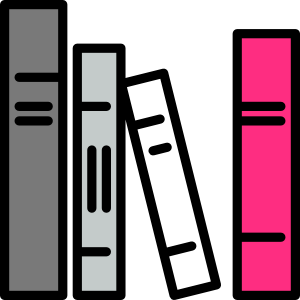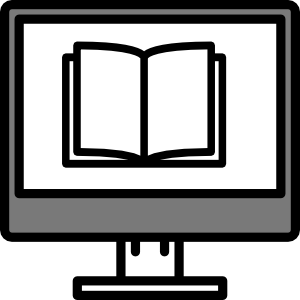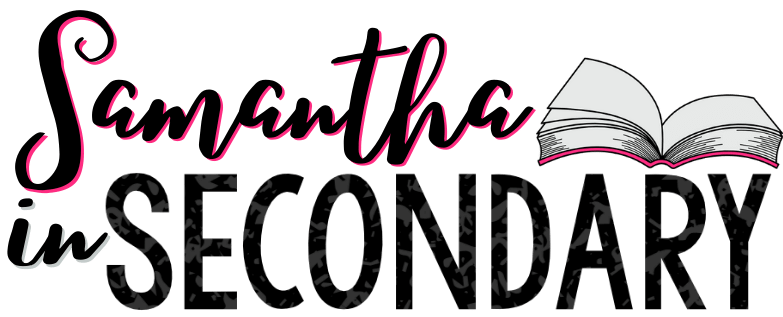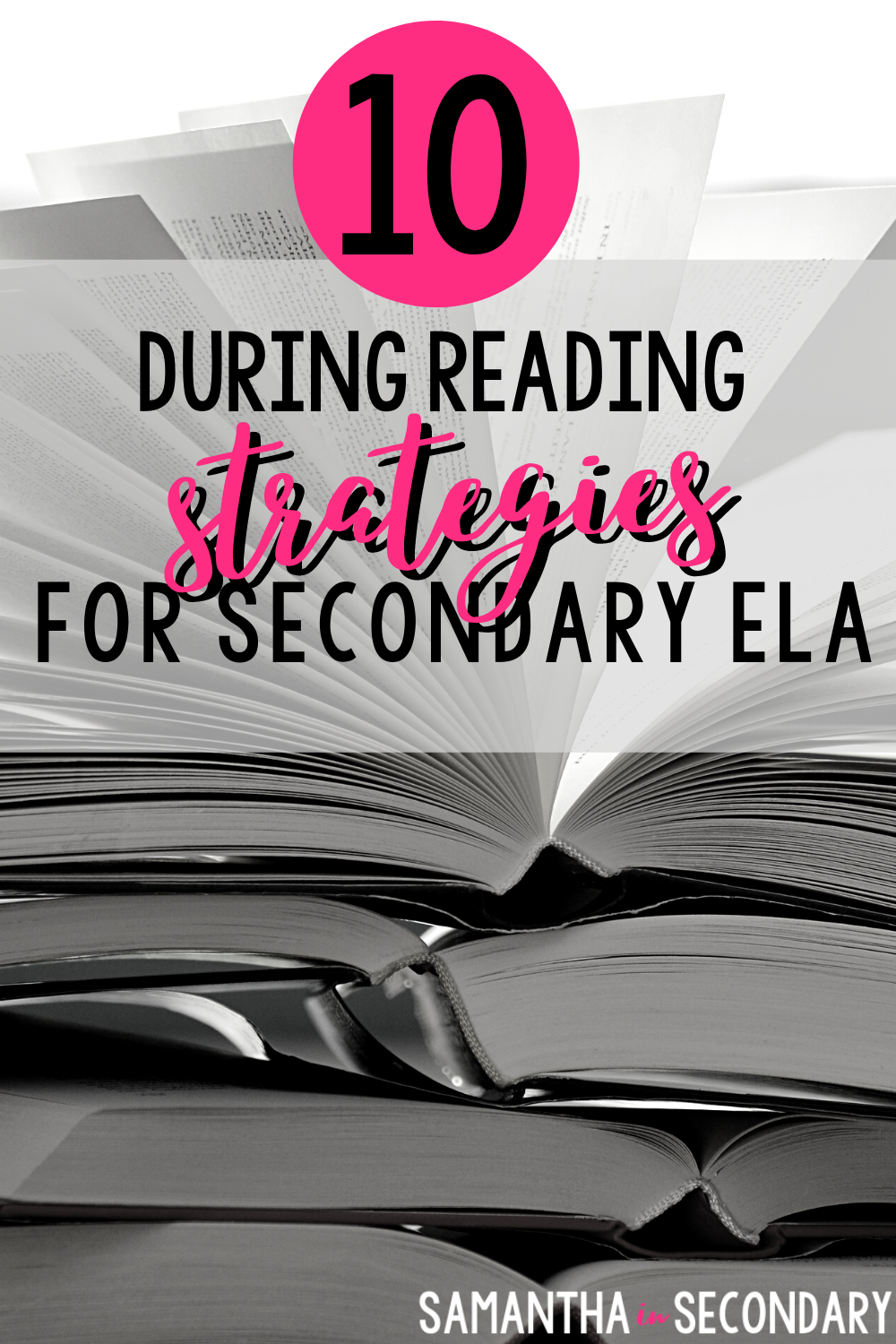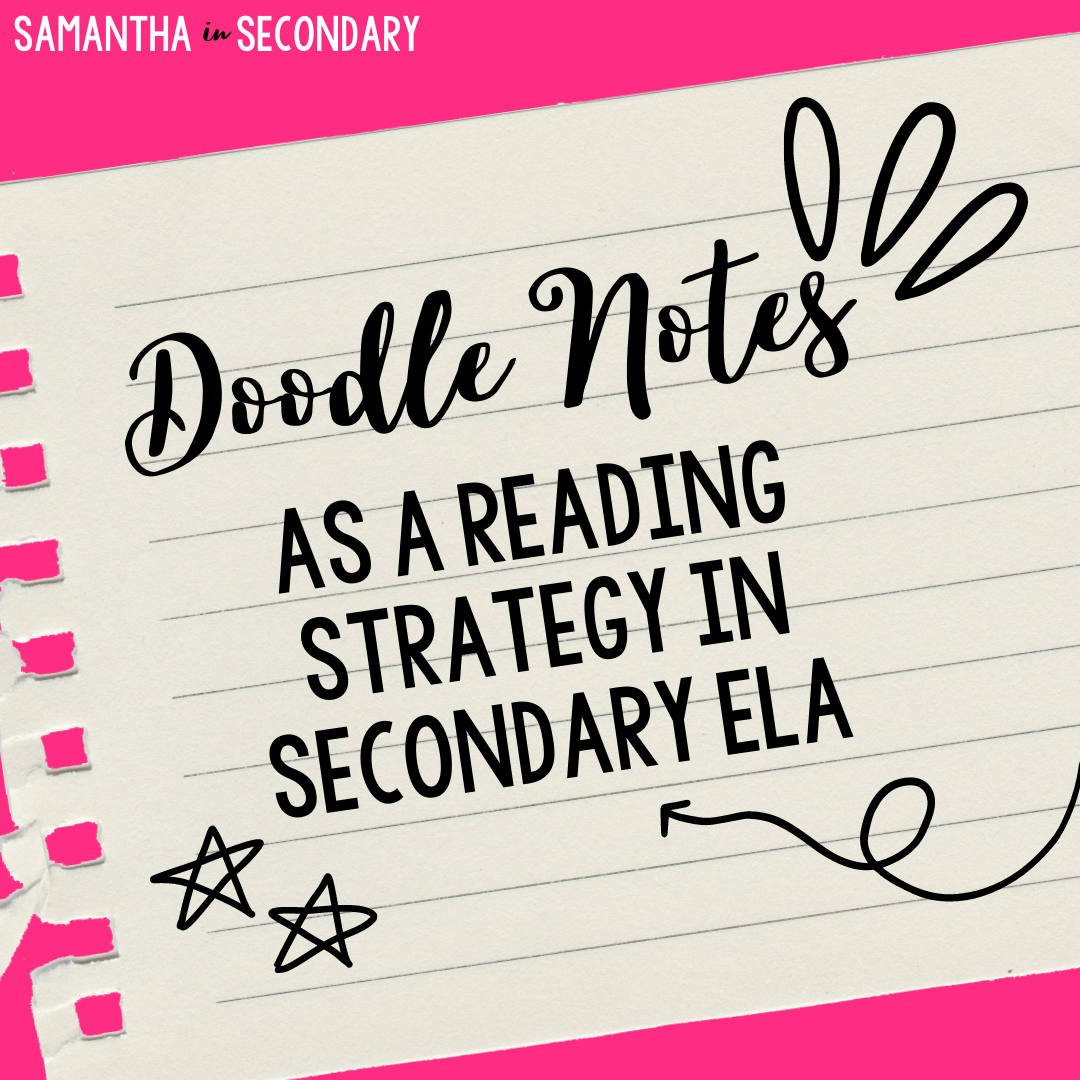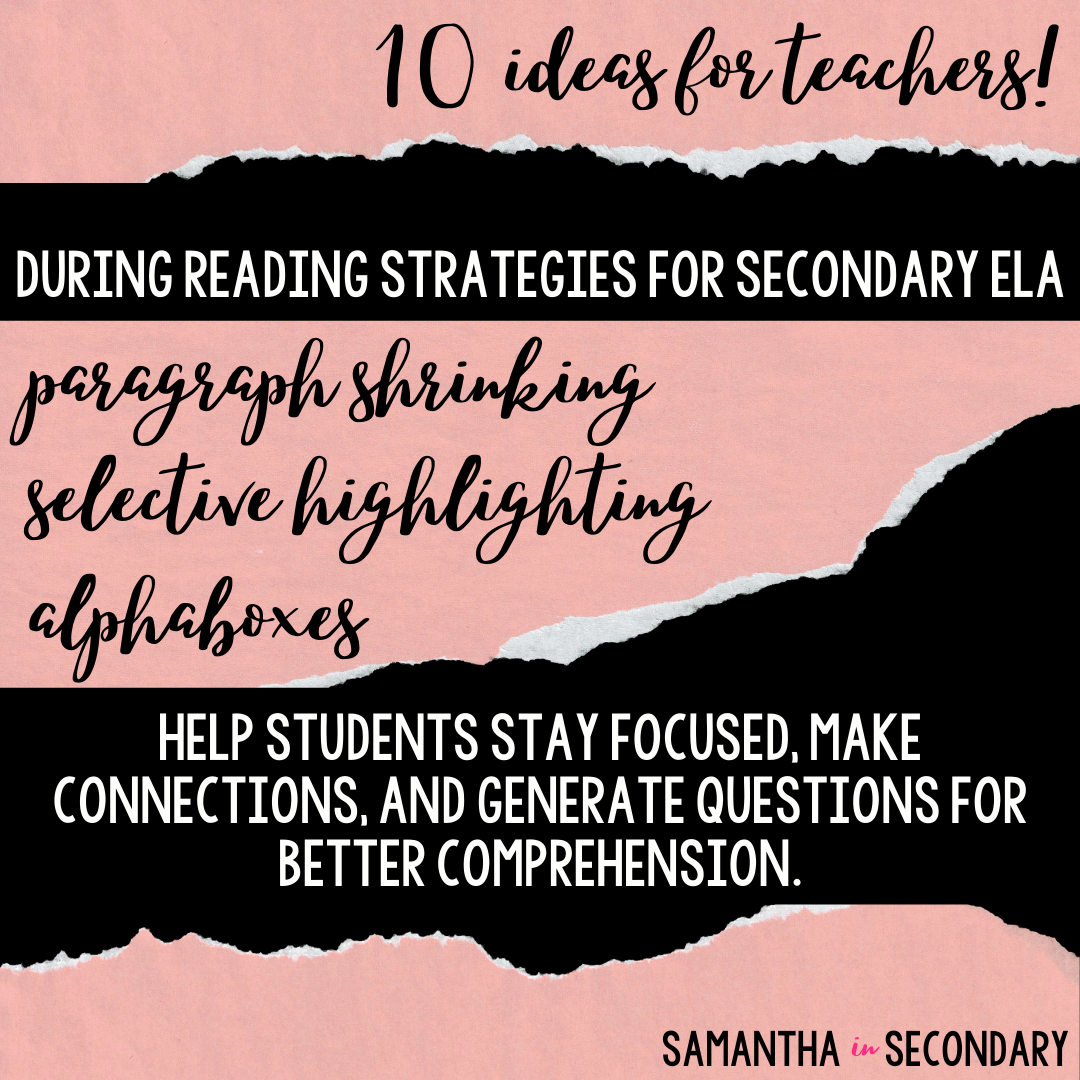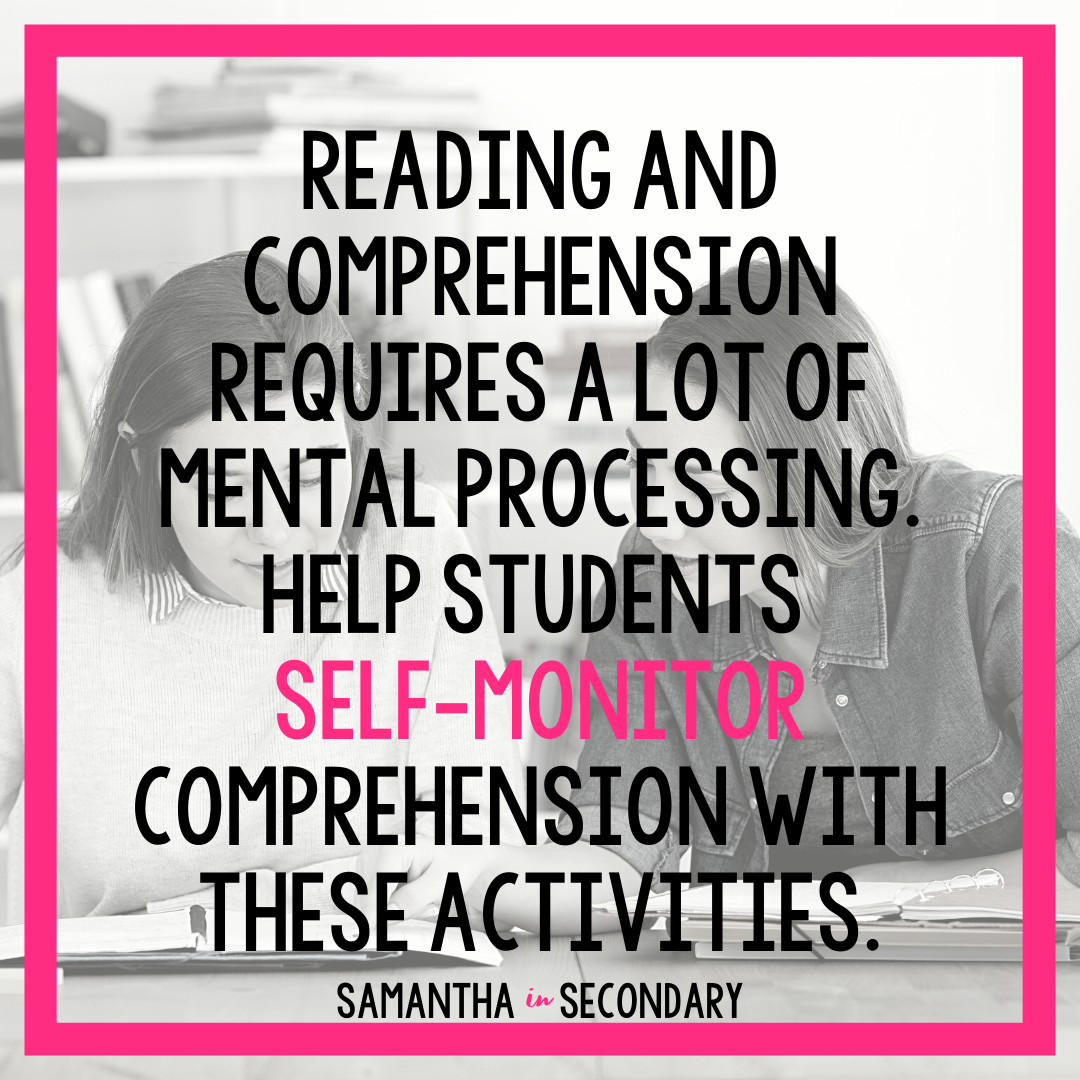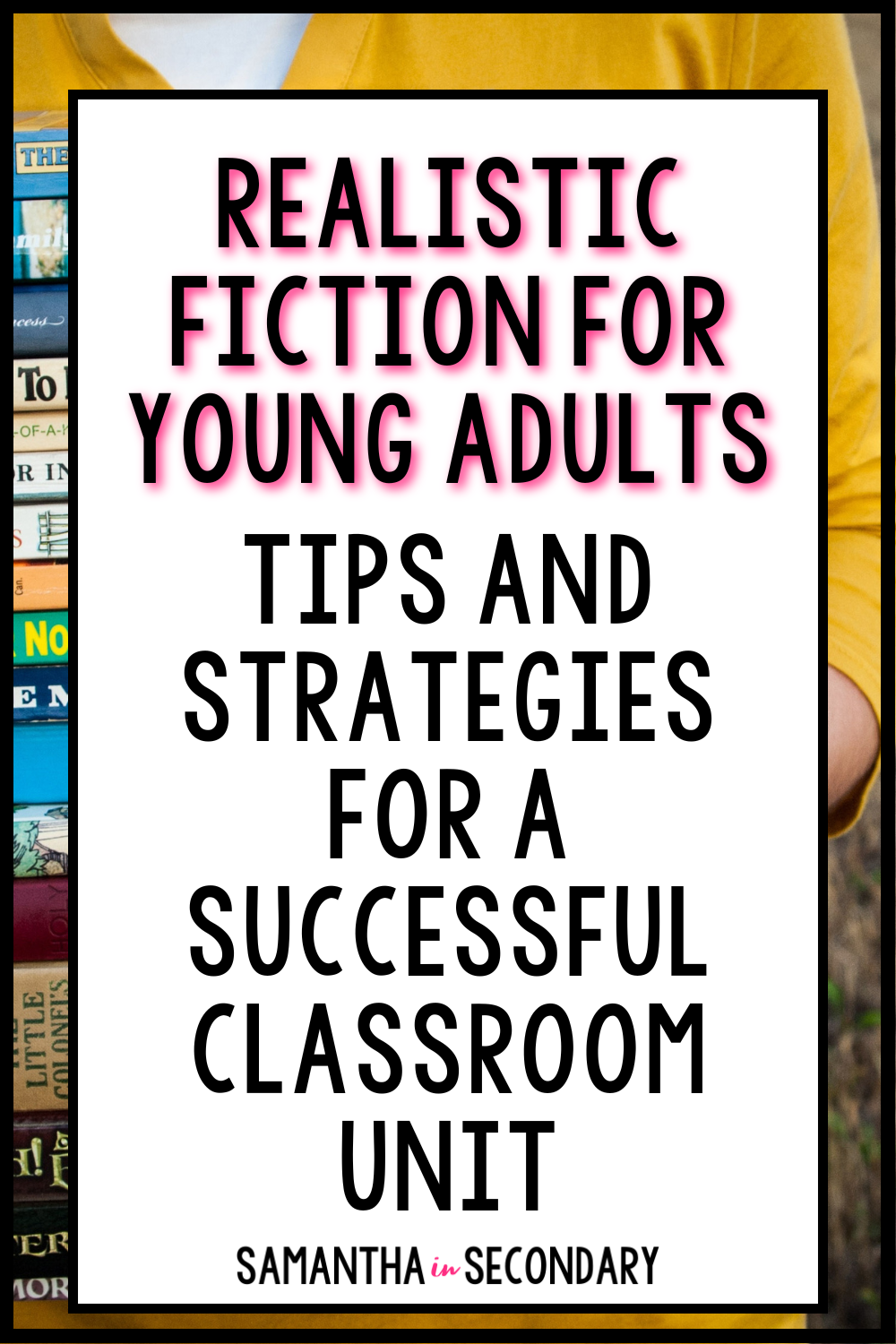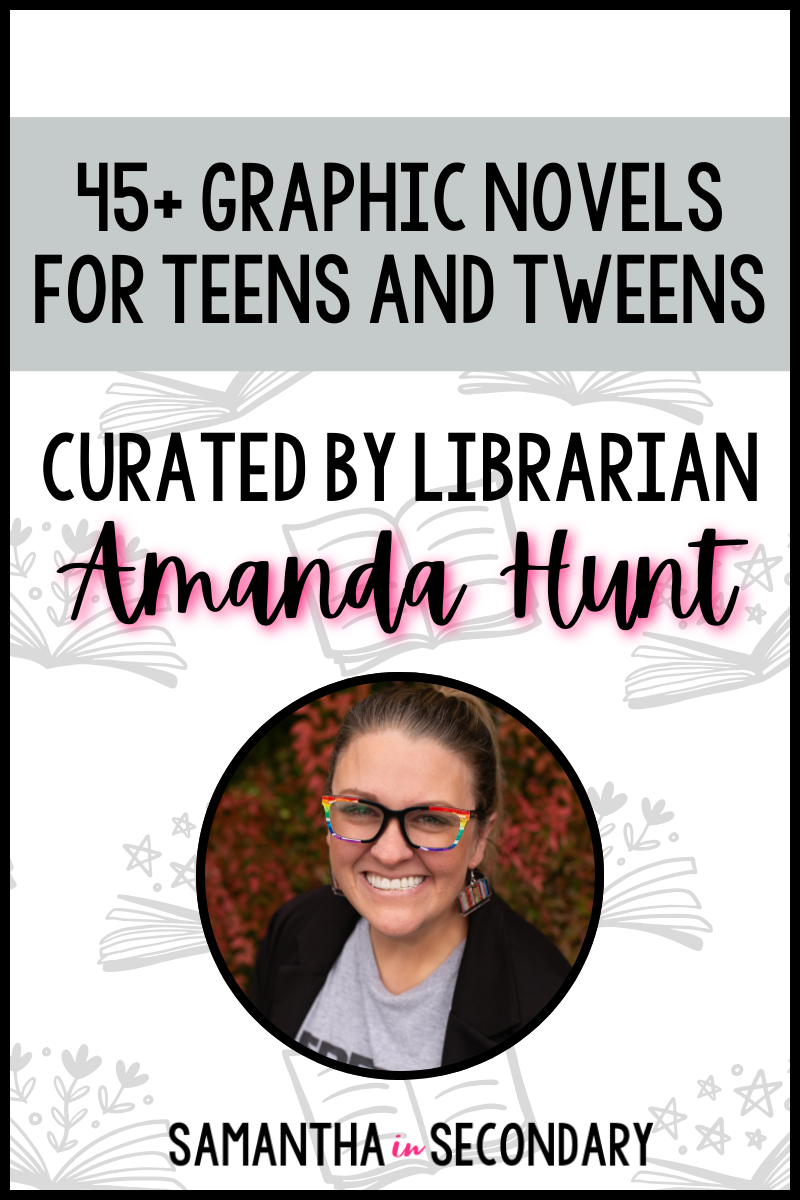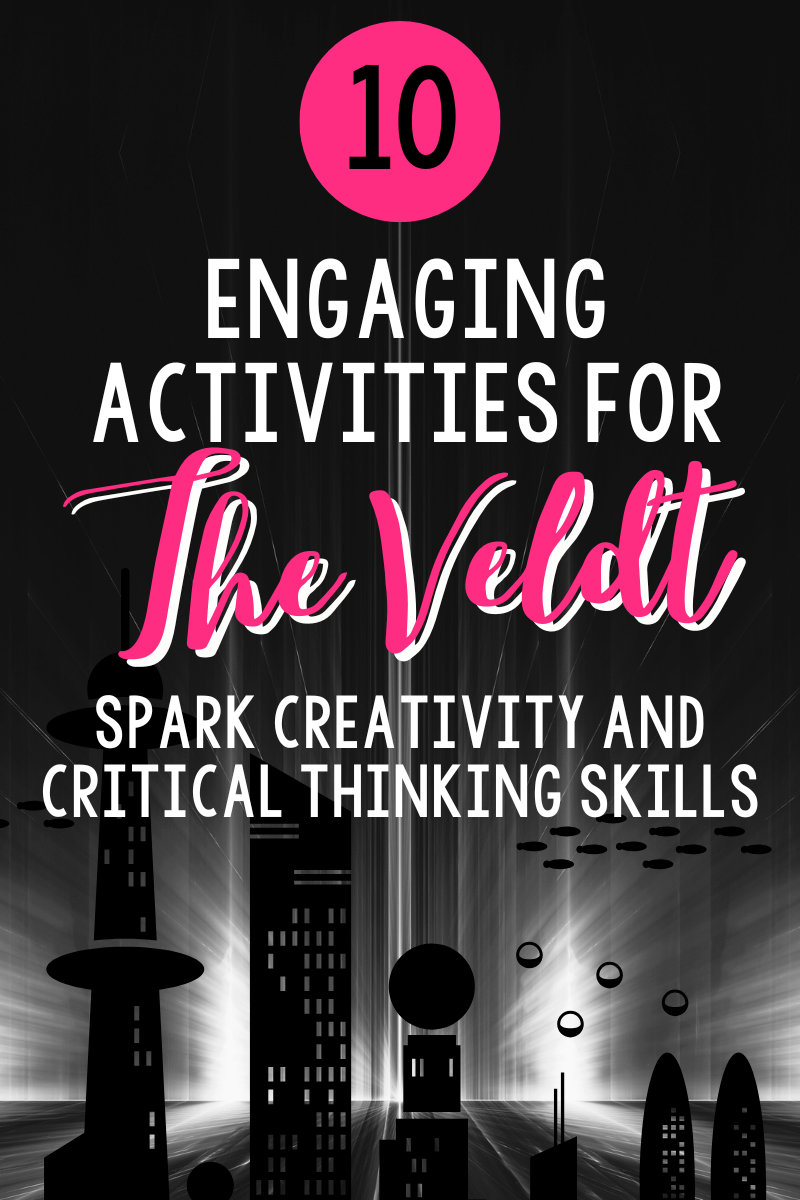Is it really important to focus on during-reading strategies at the secondary level? Of course! We have to remember, at any level, reading and comprehension requires a lot of mental processing. Reminding students of strategies and taking time to focus on during-reading strategies is how you help students with comprehension in the long game. Read on for ideas to help students self-monitor their comprehension and be more active in their reading.
1. Doodle Notes
This isn’t just for little kids. Doodle notes (or sketch notes) are a great way to keep students on task, help them focus, and unleash creativity. I have a full blog covering why students should use doodle notes in secondary ELA here. Check out my Doodle Notes resource if your students need a little guidance to introduce the concept.
2. Close Reading
There’s for sure a stigma with close reading, because students only hear the part where they have to read something more than once. But it’s an incredibly effective way to teach students to be engaged with the text. I have a method that I think has worked really well in my classes that I wrote about here. I think the hardest part is probably selecting engaging texts, so I put together a list of resources and options that you might want to consider.
3. Double Journal Entries
This is a great way to improve comprehension, vocabulary, and retention. It’s so, so simple to get put together (your students literally just need to fold a piece of paper in half). Students write phrases from the selection that they find meaningful in one column and respond next to it. This may be in the form of a comment, question, connection, or their analysis.
4. Reciprocal Teaching
They say that the teacher knows the content the best. So turn the tables and let your students teach. When students prep for reciprocal teaching, they are working on summarizing, predictions, questioning, and clarifying. This works great with small groups and is honestly an important skill for students to hone for group study work that they can use in any class (including college).
5. Story Maps
Students learn and organize the elements of literature within a graphic organizer. This is something that works for varying student abilities, and you can require as little or as much out of the organizer. Have students work individually or in groups, and utilize it for keying in on details, organize thoughts for discussions on story development,
6. Alphaboxes Vocabulary
If you have vocabulary-heavy text, alphaboxes come in handy. Handing out just a traditional list vocabulary terms has no connection, and vocabulary really needs to mean something for students to retain them. It’s a simple table with one letter in each box and students record unknown terms as they read. You can use any activity you’d like, but I usually have students define the words and use them in a sentence. I also have them meet in groups and discuss and compare terms. I can then use that to create a master list for students to study or interact with on Quizlet. I wrote about using Alphaboxes here and have a freebie you can nab while you’re there.
7. Directed Reading Thinking Activity (DRTA)
This activity walks students through a process of asking questions about a text, giving predictions, and taking time to read and make decisions about their predictions. Preselect areas in a text where students will pause their reading. This can easily be adjusted for varying student abilities. Prepare appropriate questions and prompts for your students to reply to, and end with a time to reflect on the reading. You can check out more details on this activity from the AdLit (Adolescent Literacy) page.
8. Paragraph Shrinking
This is a partner or small group activity where students take turns reading and pausing to summarize what they read into main points. This can be used later to study, or shared with bigger groups. Students provide feedback to self-monitor comprehension within their group. This works across content and gives you the opportunity to monitor and observe in groups so you can offer independent feedback and correction.
9. Selective Highlighting
You can tailor this strategy to different content, and it’s flexible. You can use it for different purposes like studying vocabulary or main ideas. This helps students pay attention to essential information within a text. Have students read a selection, reread, and begin to highlight main ideas and details. Students should focus on highlighting only facts that are important – not entire sentences. You can have students look at their highlighted portions and summarize from their highlighted notes for later studies.
10. Survey, Question, Read, Recite, Review (SQ3R)
This strategy has students think about text through a series of steps. Students survey, or review, the text to get initial information from the headers, bolded text, and images. Next they will generate questions from their preview and make predictions. Last, students will read (look for answers), recite (put together their notes to answer the questions), and review (review their answers and address any lingering questions).
During reading strategies is what helps students stay focused and gives your students opportunity to make connections and generate questions. Our ultimate goal for during reading strategies is for students to glean information from their reading and be able to turn that into applicable knowledge. Let me know what your favorite strategies are, and don’t forget to follow me on Facebook and Instagram for more tips, tricks, and resources.
Happy teaching!

